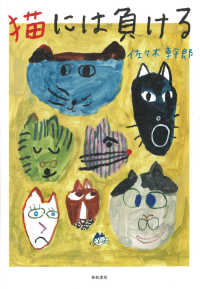Full Description
This first volume of a two-volume work focuses on the multifaceted world of donkeys, mules and hinnies, exploring their origins, breeds, conservation and management practices by examining historical, genetic, and sociocultural perspectives. The complete two-volume textbook is an indispensable A to Z guide aimed at veterinarians, students and donkey owners alike, providing a richly illustrated in-depth practical approach to understanding the anatomy, physiology, diseases and treatment of the various equine species.
This volume serves as authoritative guide to the evolution and global dispersal of donkeys, the quantitative and molecular genetics behind, as well as the roles these animals play in production and trade. Readers discover the intricacies of dairy donkey farming and get detailed insights into donkey milk and gelatine industries. The book highlights the practical aspects of donkey and mule husbandry, such as saddle fitting, harnessing, nutrition, and veterinary care. Moreover, the authors provide a comprehensive analysis of the anatomical differences between donkeys and mules, their implications for veterinary procedures, and the challenges of clinical parasitology and podiatry, offering practical guidance for maintaining their health and well-being.
Written in an easy-to-understand style, this textbook is the first of its kind to provide detailed medical information on donkeys, mules and hinnies.
Contents
Part I: Origins and Conservation.- Chapter 1. Donkey Breeds and Populations Worldwide - Origins, Challenges, Welfare and Opportunities.- Chapter 2. Challenges in Donkey Conservation and Breeding: Historical, Genetic, and Sociocultural Perspectives.- Chapter 3. Strategies for Donkey Conservation and Breeding: Policy Implementation, Research, and Case Studies.- Chapter 4. Donkey Evolution and Global Dispersal: From Domestication Mitochondrial Haplogroups to Breed Diversification Molecular Signals.- Chapter 5. Donkey, Mule and Hinny Quantitative and Molecular Genetics: Multi-Omics Insights into Breeding for Functional Traits.- Chapter 6. Wild and Feral Donkeys and mules Part II : Roles and Industry.- Chapter 7. Working Donkey and Mule Medicine.- Chapter 8. Dairy Donkey Farming: Industry Development and Insight into Milk Composition and quality.- Chapter 9. Donkeys Meat Production.- Chapter 10. Gelatinized Donkey Skin, Ejiao Industry.- Chapter 11. Working Donkeys, Mules, and Hinnies Population, Roles in Production and Skin Trade Impact.- Chapter 12. Companion Donkeys and Mules.- Part III : - Husbandry and Functional Aspects.- Chapter 13. Saddle Fit in Mules And Donkeys.- chapter 14. Harnessing and Equipment Used for working donkeys and mules.- Chapter 15. Anatomic Differences Of Donkeys And Mules And The Implications For Veterinary Procedures .- Chapter 16. A practical approach to Donkey, mule and Hinny Behavior: Learn the ABC's of Behavior.- chapter 17. Physical Examination of the Donkey and their Hybrid Crosses.- Chapter 18. Dentistry in Donkeys and Mules: Anatomical Differences, Clinical Challenges, and Preventive Care.- Chapter 19. Donkey Nutrition and Feeding Strategies.- Chapter 20. Mule Nutrition and Considerations.- Chapter 21. Clinical Parasitology in Horses, Donkeys and Mules.- Chapter 22. Biomechanics in Donkeys and Mules.- Chapter 23. Orthopedic Considerations in Donkeys and Mules.- Chpater 24. Podiatry: Hoof Care and Hoof Related Disease of the Donkey and Mule.- Chapter 25. Farrier Practices: Maintaining Donkey and Mule Hooves.








